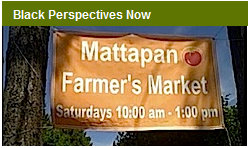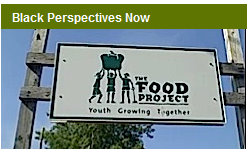Youth Fighting Fat: Childhood Obesity in Boston’s Communities of Color
September is National Childhood Obesity Awareness Month, and I recently did a series of web videos for WGBH Boston, examining this timely issue within Boston’s communities of color.
Obesity has become a very big issue of concern nationwide in recent months. According to the Centers for Disease Control & Prevention, well over half of Americans are either considered overweight or obese. The problem came to a crossroads last year when the CDC released a report, showing that Americans spend approximately $147 billion on obesity related health care costs.
Obesity is especially a problem among America’s youth. According to a book I read recently on childhood obesity called Super Sized Kids, only four percent of American children were considered obese in 1960. Today that number has skyrocketed to 15 percent and is almost triple that number in certain minority groups. This is the first generation of youth in American history whose life expectancy may actually decrease.
In addition to first lady Michelle Obama’s “Let’s Move” initiative, there are many efforts happening locally to address the epidemic. The city of Boston received over $12 million in stimulus money to specifically look at obesity among its residents. The money will not only be used to fund more community gardens and farmers’ markets, but to also look at ways to increase physical activity by providing more bicycles to low income residents and increasing bike paths around the city.
Health and Human Services Secretary Kathleen Sebelius visited the Food Project farm last month, where she got to see firsthand youth participating in creating healthier lifestyles. One of the youth workers I spoke to for this video said that the experience of working on the farm was one of the most rewarding opportunities she has had so far in her young life.
This summer, the Boston Public Health Commission launched its Soda-Free Summer media challenge, which is an effort to call attention to the high caloric and high sugar content of soda and other artificial drinks. Sugar sweetened beverages (SSBs) are closely associated with a variety of health ailments in addition to obesity, such as diabetes, liver disease and tooth decay. Bostonians are being encouraged to choose healthier drink options like water, low-fat milk and small portions of 100 percent fruit juices.
According to statistics provided by the Commission, the highest consumers of SSBs are adolescents aged 12 to 19 years old, and particularly males, blacks, Latinos, low income residents and those with a family history of obesity. About half of Boston high school students are either overweight or at-risk of being overweight.
Most of the youth working on the media project I met for this video said that they didn’t know much about the hazards of SSBs before this summer, but now felt obligated to educate others about making healthier drink choices. Many of them were even very knowledgeable about high fructose corn syrup, a corn sweetener that is ever-present in most industrialized foods and is a major factor in the nation’s high obesity rate.
During my research for this video, I learned a lot about Gatorade and other energy drinks. I am an avid runner, and while I knew that energy drinks were not necessarily a healthy drink for physical activity beforehand, learning about the high levels of sugar and caffeine in them put me off to them completely. Also, consuming sparking or carbonated water in large amounts can contribute to reduced calcium levels and higher risk of bone loss.
I guess you are never too old to learn about new things…
The Mattapan Farmers’ Market is a youth-led initiative spearheaded by the Mattapan Food and Fitness Coalition. Healthy food has become more affordable in the city this year, due in part to the Bounty Bucks program, which enables low income Bostonians to have access to products available at city farmers’ markets while strengthening the economy for local farmers. For purchases up to $20, a customer’s EBT card will be debited for half the cost. In addition, most of the food at the Mattapan market comes from farms in neighboring Milton, which helps reduce the carbon miles food travels from farm to table.
However, it seems like for every step forward, there are two steps going backwards. Recently, Congress targeted funding cuts to the Supplemental Nutrition Assistance Program (SNAP) or food stamps to offset costs for Medicaid and teacher layoffs. These cuts will especially hurt youth, who consume nearly half of SNAP-purchased products.
In the same breath, the Healthy, Hunger-Free Kids Act also just passed, which provides an additional $4.5 billion over 10 years to federal child nutrition programs including school lunch. The increase is a first in 30 years. While some advocates see this as a victory, other felt that the passage of this bill along with the food stamp cuts was like robbing Peter to pay Paul. There is no clear-cut way to addressing food security and childhood obesity; however, at least the topic has become a national discussion.
As for the Mattapan farmers’ market, the discussion is starting from the grassroots, local level, and making a difference – one bite at a time.


